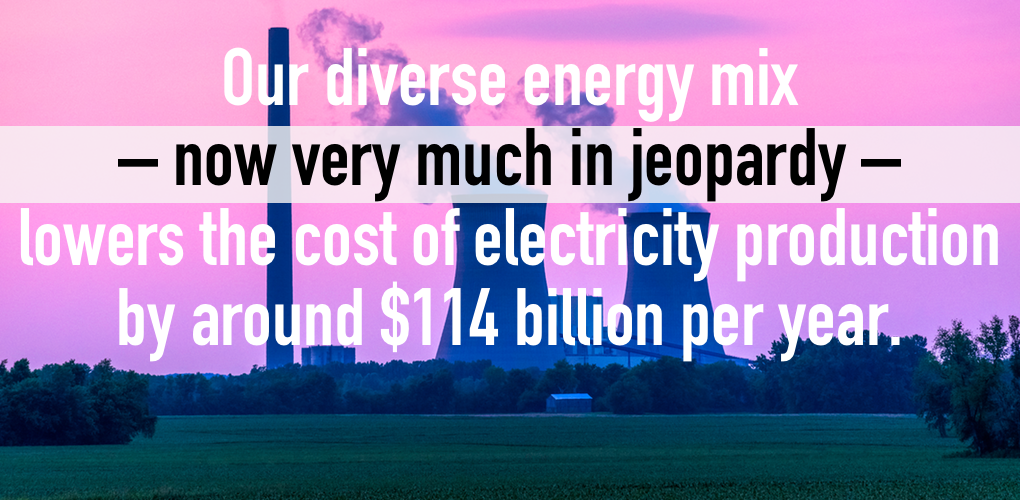
Evaluating Grid Reliability Requires Examining What’s to Come, Not What’s Been
It was the study energy wonks were sure was going to be a deal maker or breaker in the ongoing debate about fuel-secure sources of generation and the reliability and resilience of the grid. It turns out, the study is neither of those things.
E&E News obtained the unpublished draft study, and, if anything, it shows us the limitations of studying yesterday’s failures to understand today’s vulnerabilities. DOE’s draft report concludes that, “vulnerability of the transmission and distribution system is a more important cause of outages than power plant performance or fuel supply reliability, but power plants are worth looking at nevertheless.” That’s hardly a dismissal of the threat to grid reliability and resilience from the loss of fuel-secure, baseload plants. It sounds like a call for a holistic approach to strengthening the grid, not an “all-clear”.
Keep in mind, the grid’s fuel mix reviewed in the study is radically different from today’s. In 2018, more than 15 GW of coal capacity retired, and retirements continue apace. As much as half of the nation’s nuclear power plants are in financial trouble. It should be cause for deep concern.
A recent draft report from the North American Electric Reliability Corporation (NERC), the organization that oversees the reliability on the North American electric grid, warned of the threat of accelerating losses of baseload sources of power. S&P Global Market Intelligence characterized the report by writing, NERC “warns that an accelerated retirement of coal-fired and nuclear power plants over the next several years could lead to power outages, temporary shortfalls in surplus generation and transmission problems in several regions.”
Looking backwards has value but today’s debate centers on the accelerating loss of power plants that have long been the foundation for reliable, resilient and affordable power. We’ve entered new territory and we must study the implications of what’s coming, not just what’s been.
Reaffirming the Value of Grid Diversity
Where DOE’s draft report is more definitive is in the value of grid diversity. It recognizes that “a diverse generator mix is important for mitigating grid vulnerability… Because each power plant type exhibits positive and negative characteristics (which can vary based on the event), maintaining a diverse fuel mix offers valuable flexibility for the bulk power system to withstand and recover from disruptions.”
The erosion of dispatchable coal and nuclear fuel diversity – power sources that can deliver electricity to the grid when needed – and our increasing overreliance on natural gas and its just-in-time fuel delivery system is precisely at the heart of the fuel-security debate. The loss of this balance (see New England, Florida or California for a preview of what’s to come) has ramifications beyond reliability – it’s also a glaring economic vulnerability.
Through diversification, price increases or supply disruptions in any one fuel can be offset by another. An IHS Markit study from 2017 found that our diverse mix – now very much in jeopardy – lowers the cost of electricity production by around $114 billion per year and reduces the variability of monthly consumer electricity bills by around 22 percent. The lead author of the study wrote, “It is easy to take the cost-effective diversity of the current U.S. electric supply portfolio for granted.” And yet, as baseload retirements continue, it would appear that’s exactly what we are doing.
- On February 14, 2019
